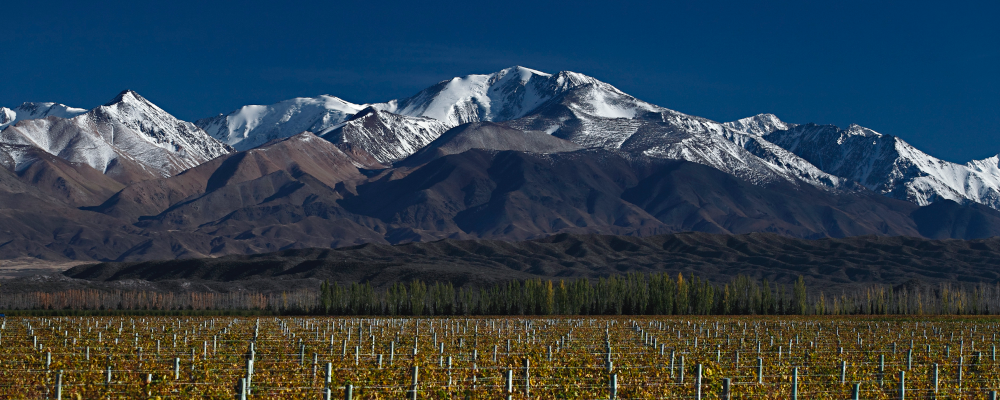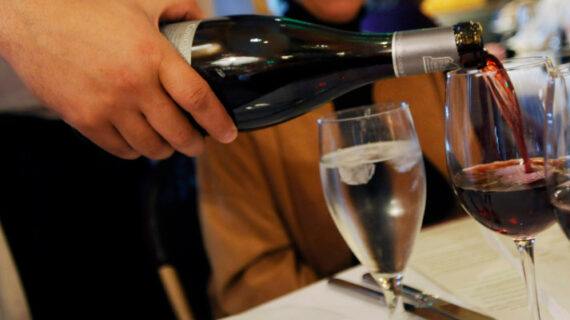Malcom Jolley, co-founder of goodfoodrevolution.com, is joining The Hub as our resident epicurean and wine columnist. Twice monthly, Malcom will be providing readers with a tour of a different wine growing region globally and his recommendations for wine selections available in Canada that capture the terroir of locales, personalities and cultures featured in his column. Hey, it’s Friday and 5 o’clock somewhere. Enjoy!
While the wine world is certainly subject to trends and fashion, winemakers move much more slowly than most creative makers.
After all, the shortest turn around in a vineyard is a year, and many wines take years more in the cellar before they are released to market. In this way, change in the wine trade follows Ernest Hemingway’s line about going broke: “Gradually…” as plans are slowly executed, “then suddenly…” when over one or a few vintages the changes take hold.
Something like this is happening to the wines of Argentina, and its been causing me to re-evaluate, for the better, their position in the market.
MORE SIGNAL. LESS NOISE. THE HUB NEWSLETTER.
Whether the wines of Argentina have been changing gradually I don’t know for sure. I do know that I have suddenly in the last few months become aware of a change in at least some of the wines being exported from that country that is verging away from heavier jammy wines towards fresher, fruit forward and food-friendly ones. These wines are challenging my preconceptions of Argentine wine and, in talking to some of the young(ish) women and men who are making them, this is both the result of a purposeful act and a natural progression.
What I am seeing is an influx of “affordable premium” wines at around $20, or little bit more, that are meant to compete with a higher price point, and this is good news for Canadian consumers of fine wines.
Argentina has always been a big wine producer, but until the mid-1980s nearly all production was for domestic sales. In fact, the Argentines drank so much wine (an average of about 100 litres per person per year) that domestic production couldn’t keep up and the country imported wine to keep up with demand. With political and economic reforms in the 80s and 90s came an emerging middle class and a change of habits: less wine, but of better quality. And as the Argentine political economy opened up so came access to capital and foreign investment. The industry was poised to pivot to exports.
A recent report cited Argentine reds as the big winner in UK sales in the pandemic year of 2020.
One of the pioneers of the new Argentine wine movement of the late 20th Century was Nicolás Catena Zapata. 1988 he lured away, from a job in rival neighbour Chile, a young Californian winemaker named Paul Hobbs. Hobbs was trying his hand at new kind of job “winemaker consultant” after having established himself working for, arguably, the most famous wine producer in the world at the time, Robert Mondavi. Mondavi’s Napa Valley style of wine, especially expressed in Cabernet Sauvignon, was the style of the moment, garnering high scores (another new invention) and high sales. At the same time consumer demand for wine, especially big red wines, began to grow exponentially in the world’s traditional export markets of North America and Northern Europe as drinking habits changed there too.
As Catena Zapata and Hobbs rode this perfect storm, they made a crucial and influential decision to continue keep growing and making wine from Argentina’s number one red grape, a Bordeaux variety that was more or less obscure elsewhere, called Malbec. From the 1990s through today, Malbec is by far the biggest and most popular exported wine from the country, and the prevailing style is in the big, slightly hot with high alcohol, slightly sweet flavour that launched Argentine exports.
This style is still very much in demand, and a recent report from Wine Enthusiast magazine cited Argentine reds as the big winner in UK sales in the pandemic year of 2020. I assume those sales were driven by supermarkets and my guess is they were mirrored in places like Canada where wines priced around $10 are still the big retail sellers. I would venture that in most of the English speaking world the word Malbec is a perfectly well understood metonym for Argentine red wine.
But here’s the thing about Catena Zapata: he didn’t stop at the export revolution. The Catena Zapata label would go on to make some of Argentina’s highest rated and highest priced wines. At the same time his eponymous winery began to invest increasingly in their vines, especially Malbec vines that were decades old and often grown at altitudes of over 1,000 metres at the foot of the Andes.
The next generation, in the form of Nicolàs’ daughter Dr. Laura Catena began a new project in 2002, with Catena Zapata head viticulturist Luis Reginato, that focused on old vineyards owned and farmed by the company’s long-time growers.
Meanwhile, other Catena Zapata alumni are contributing to this second wave, like Alejandro Sejanovich, Jeff Mausbach and Jorge Crotta who make high altitude wines from Malbec at specific soil sites at TintoNegro. Or winemaker Juan Pablo Murgia of Argento, a winery that originally created as a joint venture of Catena with a British wine importer, and is now the country’s largest producer of organic wine. Or Iduna Weinert, who’s family’s Weinert Bodegas y Cavas makes Malbec in the old fashioned way before the export revolution.
All these brands, which are widely distributed in Canada, are making lighter, fresher wines, with higher acid levels from being picked earlier. They’re still big on fruit, but not jammy. They’ll still match a grilled steak, but they’ll also pair with a red sauce pasta, or even a roast chicken. And they’re hitting that $20 sweet spot, when they could go up against Old World wines at $10 or $20 more.




